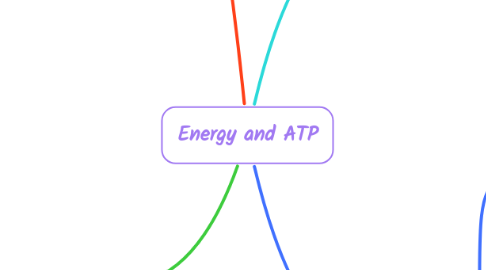Energy and ATP
저자: Dilys Florence Orozco Williams


1. POTENTIAL ENERGY
1.1. It's based on oxidation reactions, and oxidation removes electrons from a molecule which decrease the potential energy.
1.2. Reduction gives an electron from its molecule and increases the potential energy.
1.3. Potential energy is stored energy and depends on the relative position of the parts of a system.
2. CHEMICAL ENERGY AND FOOD
2.1. Heterotrophs must consume energy to have it in our body.
2.2. Autotrophs: produces their own energy from food.
2.3. Us humans are heterotrophs > these organisms take energy
2.4. Calories: the amount of energy you need to heat 1 g of water 1C up (it is a unit) depending on the type of molecule they accumulate different type of energy.
2.5. Cellular respiration: energy is liberated from food in Process called presence of oxygen by a respiration.
2.6. - glucose= facilitated diffusion - electron transport C02, O2 = diffusion - H20 > osmosis, protein, acquaporin.
2.7. when pyrovat enters mitochondria it will turn into acetyl and when water moves with osmosis it is called chemo osmosis.
2.8. Photosynthesis removes carbon dioxide from the atmosphere and respiration gives it back, it produces oxygen and respiration, obtains energy from food and The sunlight will enter the chloroplast & you will produce glucose and oxygen, afterwards it will turn into chemical energy which is called ATP.
3. CELLULAR RESPIRATION
3.1. There are 2 types of cellular respiration: aerobic and anaerobic respiration.
3.2. Aerobic respiration: requires the presence of oxygen, it is formed by glycolysis, krebs cycle and electron transport chain. (Acetyl, 36 ATP, cytoplasm, mitochondria).
3.3. Anaerobic respiration: it has to be in the absence of oxygen and it only requires glycolysis. (fermentation) (Alcohol, lactic acid, 2 ATP, cytoplasm).
3.4. Fermentation is the anaerobic respiration of bacteria and fungi.
4. ENERGY
4.1. Energy stored in bonds of the small molecule ATP can power the movement of a motor protein.
4.2. ATP creates energy, and we must eat carbohydrates, lipids, proteins, and all this are made with glucose, so glucose and oxygen ti have ATP.
4.2.1. ||
